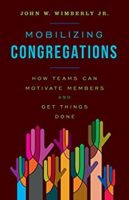
A group helping non-profits on management and leadership issues recently circulated an article posing a key question: Do nonprofits put enough value on digital skills? Most non-profit leaders understand the importance of financial, personnel, and facility management, but too few leaders have an adequate understanding of communications management. For congregations, we might ask: Do congregational leaders place enough value on communication skills and management?
If you want to discover one of the reasons congregations struggle to attract newcomers, take a look their websites. They are typically appalling. Top-tier websites communicate two key messages: who the congregation is and what the congregation is about in serving God and their community. Those sites communicate those with images more than with words. In secular terms, the home page communicates the congregation’s “brand.” More-specific information is found deeper in the website as the visitor clicks well-labeled links to pages for calendar, program activity, staff details, etc.
Two key tasks of a website
Too many congregational websites fail, to one degree or another, in the two key tasks of communicating “who” and “what.” Typically the sites are text-heavy and image-light communicating more about what is happening at their congregation than why it is happening. At their best, congregational websites feel like an annotated calendar—describing what is taking place and when. At worst, they describe mostly what has taken place already!
Jesus communicated primarily with images. What does the average person remember about Jesus’ teaching? A prodigal son. A lost sheep. A healed leper. A good Samaritan. These compelling images convey the nature and activity of God. A good website needs images that are just as memorable.
There is no excuse for congregations being behind the curve with their websites. Google provides congregational leaders with a plethora of articles that enable readers to get up to speed on website design. For example, The 16 Website Design Best Practices For Conversions in 2018 offers some basic guidelines. Most of the article’s best practices are directly applicable to congregational sites.
The article shows two websites as an example. One is filled with text and one is not. The latter is the best practice. In contrast, many church websites look as though they are attempting to cram as much text as possible onto the home page. I assume the designers think visitors won’t move beyond the home page, so they want to get everything onto it. In today’s best practice, the home page communicates the congregation’s purpose—through images and a bit of text. Details of how that purpose is carried out or how to become involved are found as the visitor clicks deeper into the website.
Human faces
Another best practice is the use of human faces. Few things better communicate the nature of a congregation’s mission and membership than photos of people. It amazes me how hard it is to find images on some congregational websites. When I am looking for images, too often I have to go to the congregation’s newsletter or Facebook page (if there is one).
Another best practice for capturing human faces is the use of video. There are few things more compelling than a 60 to 90–second video in which a member talks about why participation in the congregation enriches his or her life. Short videos of mission projects, youth groups, choirs, etc. communicate beyond the power of words alone.
Do you look at the statistics for your website? It’s one thing to build a website. It is another thing to understand how it is—or isn’t—being used. Most web providers produce amazing data about the usage of a website. In the hands of a knowledgeable interpreter, this data helps a congregation understand who is visiting the site, how it is being used, etc. Many congregations can recruit such an interpreter from their membership or staff. If not, it is a skill that can be learned fairly quickly.
What skills do we value?
All of this leads me back to my opening question: Do congregations put enough value on their leaders possessing 21st-century communication skills? Looking at church information forms, I have never seen a congregation state such skills as a priority for their incoming pastor. Indeed, I’ve never even seen it listed. This missing priority is telling.
Interestingly, when this subject is discussed in congregation consultations, what I typically hear in response to my critiques of a website is: “I agree. Our website is totally inadequate.” Despite such awareness, nothing is done. Would we be so passive if worship or religious education were “totally inadequate?” I certainly hope not. Congregations ignore “totally inadequate” websites at their own peril. It would have been like Luther ignoring the power of the printing press.
While younger clergy and younger members tend to see website problems, their awareness does not always translate into rebuilt websites. Why? Other priorities trample the communication priority. Communications need to be moved up to the top of our “to do” lists. Clergy and other leaders need to educate themselves on best practices of communicating in the 21st century. Leaders don’t need to understand all the intricacies of programming, hardware, software, and website design. But they need to be fluent in what constitutes an excellent website, eblast or social media presence. They also need to understand how to staff a communications ministry.
Sea change in communications
We are in the midst of an epic change in how we communicate. Seminaries and other educators need to develop powerful continuing education opportunities that provide the skills pastors and other congregational leaders need to be effective in communications in our digital age. Whether it be websites, eblasts, or social media, lack of knowledge in communications creates an almost impossible barrier to congregational health and growth.
In the year 2019, a congregational personnel committee would be wise to ask its pastor and staff, “What have you done to upgrade your communication skills for ministry in the 21st century?” It is important for congregations to provide adequate continuing education funds for leaders to get the skills they need. In a world driven by the internet and communication satellites, continuing to avoid this topic feels like some kind of death wish.
John Wimberly is an experienced pastor and consultant. As a consultant, he has worked with congregations and judicatories on strategic planning, staff designs for the 21st century, and congregational growth as well as financial and administrative management. He has MBA, MDiv, and PhD (theology) degrees. His books focus on effective management and leadership. John believes congregations can have a bright future!



